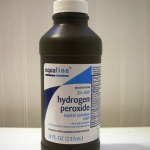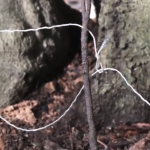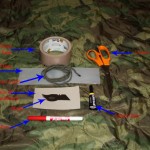Swimming for survival takes an enormous amount of energy, and even the best swimmers can run into trouble in a very short period of time. It is very important to think about how you can create makeshift or improvised flotation devices that can be used at a moment’s notice. Let’s take a look at a few examples that can turn out to be very beneficial in a survival situation. They may also inspire you to think of your own solutions as well.
Clothing
Clothing can help as well as harm us in a water emergency. On one hand, they can be tied in a way to trap air and help to keep us buoyant. On the other hand, they can become water-logged and start to pull us under. If this happens, we will not only need to swim to survive, but we will also need to expend energy to offset these forces in order to keep our heads above water.
The best way to turn clothing into an asset as opposed to a liability is to remove our shirts and pants. For shirts, you can tie off the collar as well as each arm into a knot. For pants, you can tie each leg into a knot or tie them together. All you need to do is raise the clothes above the water, scoop in some air, and then pull them back into the water with the open end facing down. The air will become trapped once the exposed end hits the water, and you will have a sturdy and buoyant device that can help to keep you afloat.
Just keep in mind that you will need to repeatedly scoop and dunk the clothes in order for this method to be effective over time. However, this is one of the easiest things that can be done when other options are not available.
Debris

We’ve all seen shows or read stories about people who cling to debris such as wood and plastic in order to stay afloat. These really work, to a certain degree. One of the best things you can do is to find a few pieces and gather and find a way to connect them together. This will increase the surface area of your improvised device and provide greater buoyancy.
On the other hand, if you are searching for devices that are on land so you can cross a body of water, keep in mind that not all wood or plastic floats. In fact, there are a lot that will sink. Test each item before relying on it to get you across to the other side.
Plastic

Plastic bags as well as containers are exceptionally buoyant, and you can easily fashion plastic into a flotation device with a little ingenuity. Just keep in mind that the amount of plastic that you will need is proportional to your weight. If you weigh a couple hundred pounds, chances are that you will need more than one or two milk cartons to keep your head above water. However, you can easily tie various containers and bags together in order to not only support your weight, but to provide you with a “net” or web that you can rest upon as well.
These are just a few examples of things that you probably have on hand right now that can be modified in seconds to serve as flotation devices. Take time to think about what other items you have that can trap and hold air while supporting your weight as well. Your options are only limited by your ingenuity and creativity. However, it’s important to give this some thought because you never know when you may end up needing to fashion something to keep you or someone else afloat during an unexpected water emergency.















